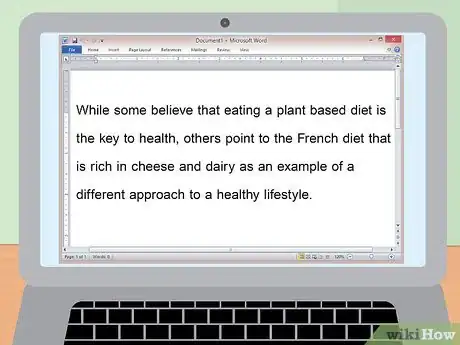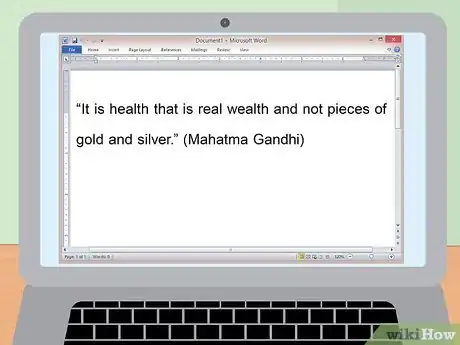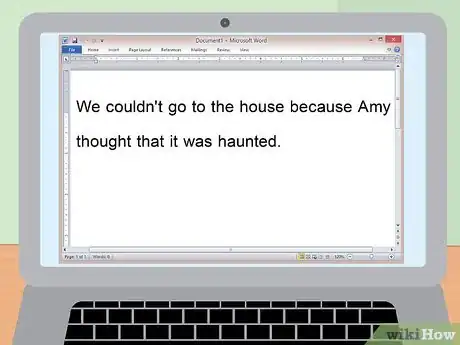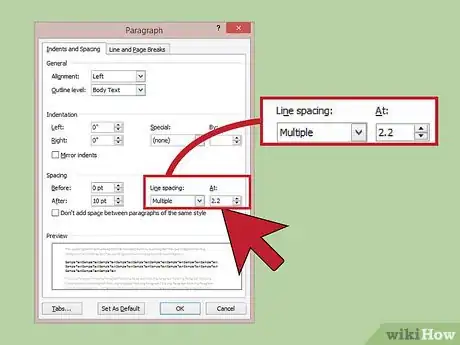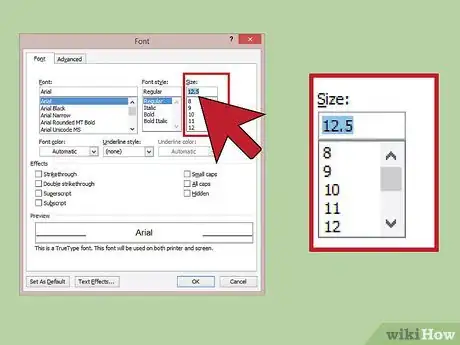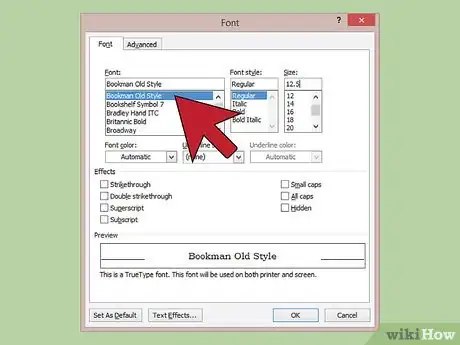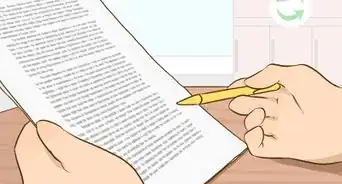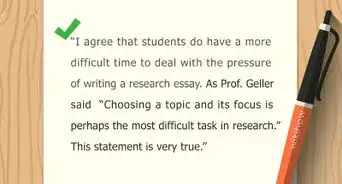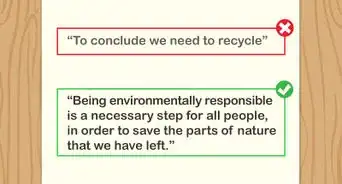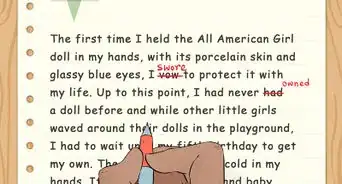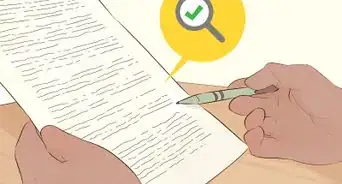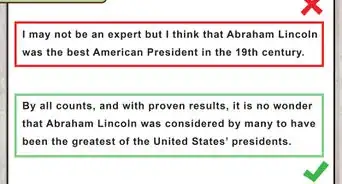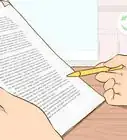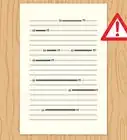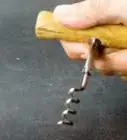This article was co-authored by wikiHow Staff. Our trained team of editors and researchers validate articles for accuracy and comprehensiveness. wikiHow's Content Management Team carefully monitors the work from our editorial staff to ensure that each article is backed by trusted research and meets our high quality standards.
This article has been viewed 78,242 times.
Learn more...
Students often struggle to reach a required page length when writing a paper. When trying to make your paper longer, keep in mind that quality is more important than quantity. Using tricks to fluff up your paper should only be used as a last resort once you’ve really put in a lot effort towards making your paper as strong as it can be. Starting in advance, doing lots of research, and crafting a coherent and cogent argument are the best ways to make a paper shine.
Steps
Adding More Content
-
1Do a lot of research. A well-researched paper is bound to have more content. Don’t be afraid to use outside sources to bolster your argument. Go to your school library or local library to search the stacks and online databases for sources relating to your topic.[1]
- Jstor and Project Gutenberg are two good resources for academic writing. Oftentimes your school will allow you free access to these sites. Ask your teacher for help on finding sources.
-
2Make a thorough outline. Writing an outline lets your organize your arguments and ideas in a coherent way. Divide your outline into the sections your plan to use in your paper. For example, you might have one section entitled “Introduction,” followed by “First body paragraph, Second Body Paragraph, Third Body Paragraph,” and “Conclusion.”[2]
- Put in the supporting evidence and quotes that you plan to use in your outline. Make sure to have lots of different possible examples to choose from.
- Writing an outline helps you to see what sections are strong enough to be expanded on further for extra length.
Advertisement -
3Provide a counterargument. If you’re looking to fill more space in a constructive way, try adding a counterargument. Not only does expanding on a counterargument lengthen your paper, but it actually makes your paper stronger by showing that you are able to account for different perspectives.[3]
- You can either weave counterargument into your pre-existing body paragraphs or add separate paragraphs to account for them. A good way to introduce a counterargument is with a sentence such as: “While some believe that eating a plant based diet is the key to health, others point to the French diet that is rich in cheese and dairy as an example of a different approach to a healthy lifestyle.”
-
4Add another body paragraph. Don’t feel like you have to be locked into the typical five paragraph essay. After making your outline, see if you can add another short paragraph or two to elaborate on an existing point or add a completely new one.
- If you’re stuck on coming up with an idea for a new paragraph, re-read some of your source materials for quotes that strike you as interesting. Once you’ve found a few, see if you can craft another argument around some of those examples.
-
5Use more support. It never hurts to add in a few more quotes to back up your argument. This is why it is important when making an outline to add lots of different possible quotations to use in your paper. If you’re struggling to make a paper long enough, try adding one of those extra quotations is as extra support and then adding a few sentences of your own analysis after.[4]
-
6Seek help from a teacher or a librarian. Research librarians are great resources when it comes to writing papers. Schedule a meeting with a school librarian and you will leave the meeting with more sources than you’ll know what to do with.[5]
- Your teacher will be more than happy to help if you’re having trouble with a paper. Don’t be shy! It’s their job to give you guidance.
- You can also ask a friend to peer edit. Having a fresh set of eyes on your paper will let you see things in a new way.
Using Different Language
-
1Replace pronouns with more specific nouns. Look for places in your paper where specific nouns can be subsisted for pronouns such as “he,” “she,” “it” or “they.” Try to use people’s full name, proper nouns, and descriptive nouns in place of pronouns.[6]
- Instead of saying "He found it", say "Johnny found the apple."
- If you’re referring to a specific person, such as George Washington, use his first and last name throughout the entire paper instead of shortening to “Washington.”
-
2Be poetic. Use lots of flowery language. Adding lots of adverbs and adjectives will make your sentences longer and oftentimes will improve their quality.
- Instead of saying “The Great Gatsby is an important work of fiction,” say “The Great Gatsby is a seminal work of literature that has influenced aspiring writers since its publication in the early twentieth century.”
- Use the words really, very, and truly when possible. Don’t overdo it, though – your teacher is bound to notice too many adverbs.
-
3Add extra unnecessary words. Nowadays, we often overlook certain articles, such as extra "the"s or "a"s and words like "because", "that", and "so". Add these, they'll definitely add some lines.
- Instead of saying, "We couldn't go to the house, Amy thought it was haunted." Say "We couldn't go to the house because Amy thought that it was haunted."
Changing the Document Settings
-
1Increase the spacing between lines. Most papers are supposed to be double spaced, but it’s very difficult to tell the difference between 2.0 spacing and 2.2 spacing. Your teacher is not likely to measure the line spacing to make sure it’s exact, and using 2.1 or 2.2 spacing can go a long way towards making your paper a bit longer.[7]
- To change the spacing in Microsoft word, go to the Format tab, then click on Paragraph.
- Once in Paragraph, click on line spacing and change to “Multiple.” Then in the “At” tab write in 2.1 or 2.2.
-
2Change the size of the font. You can also change the font size just a bit to make words take up a bit more space on the page. Most teachers want papers written in size 12 font, but likely won’t notice if your font is instead 12.5.[8]
-
3Add extra spaces after periods. Adding two spaces instead of one after periods will make your paper longer, and it’s not a very obvious change.
- Here is an example of a sentence with one space after the period: “The 20th century saw many changes. Not only were there two World Wars, but also the growth of industry and technology.”
- This is the same sentence with two spaces after the period. The difference is barely noticeable: “The 20th century saw many changes. Not only were there two World Wars, but also the growth of industry and technology.”
- You can also change the font size of the periods to 13 or 14. This goes for all forms of punctuation. Again, this trick is largely unnoticeable.[9]
-
4Increase the margins. Increasing the size of the margins to around 1.25 decreases the number of words per page. Having fewer words on a page makes your paper have more pages, and you don’t have to write anything extra.[10]
- To increase the size of the margins, click on the Toolbox Icon and go to the section entitled “Document Margins.”
- From there, set your margins to 1.25. This size is big enough to make a difference but small enough to not be too noticeable.
-
5Change the font. If your teacher doesn’t require a specific font, there are some options outside of Times New Roman that will make your paper longer. A good choice is Bookman Old Style, which still appears formal but takes up more space. [11]
- Don’t use something too obvious like Comic Sans.
-
6Don’t use every one of these tricks. Your teacher will notice if the margins, font size, and spacing have all increased, plus the font is different and you’ve suddenly become a poet. When writing a paper, it’s best to put in the effort to make your paper meet the page requirement through thorough research and clear, effective writing. Only use one or two tricks to fluff up your paper if it becomes dire. Otherwise you risk getting caught by your teacher and having your grade lowered.
Community Q&A
-
QuestionI'm doing a project on a poster board and have extra space. What should I do to fill up the white space?
 Community AnswerPrint some images related to the project and arrange them in the white space; this will enhance your presentation and improve the aesthetics of your poster board.
Community AnswerPrint some images related to the project and arrange them in the white space; this will enhance your presentation and improve the aesthetics of your poster board.
Warnings
- Don’t plagiarize. Never steal other people’s ideas or writing to make your own paper look longer. Trust in your own intelligence and write an original piece of work.⧼thumbs_response⧽
- If your teacher has been teaching for a long time, they'll probably pick up on some of these tricks. The unnecessary words, extra indent and double-double spacing tricks are to be used sparingly, if at all.⧼thumbs_response⧽
- Don’t procrastinate. If you give yourself enough time to thoroughly research a paper and seek help from your teachers, you will be able to write a paper you are proud of without using any tricks to fluff it up.⧼thumbs_response⧽
References
- ↑ https://www.kibin.com/essay-writing-blog/how-to-make-an-essay-longer/
- ↑ https://www.kibin.com/essay-writing-blog/how-to-make-an-essay-longer/
- ↑ https://www.kibin.com/essay-writing-blog/how-to-make-an-essay-longer/
- ↑ https://www.kibin.com/essay-writing-blog/how-to-make-an-essay-longer/
- ↑ https://aboveaverage.com/7-foolproof-tips-for-making-your-college-essay-longer/
- ↑ https://www.kibin.com/essay-writing-blog/how-to-make-an-essay-longer/
- ↑ http://www.jakebinstein.com/blog/how-to-make-an-essay-look-longer/
- ↑ http://www.seventeen.com/life/school/advice/a27491/tricks-you-try-to-make-your-school-paper-longer/
- ↑ http://www.seventeen.com/life/school/advice/a27491/tricks-you-try-to-make-your-school-paper-longer/


